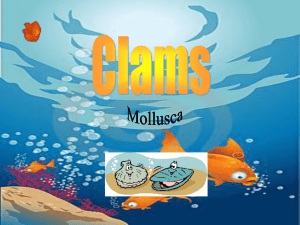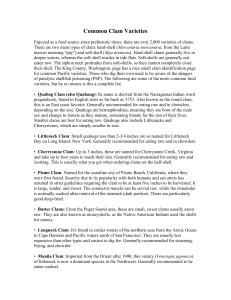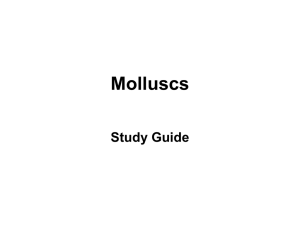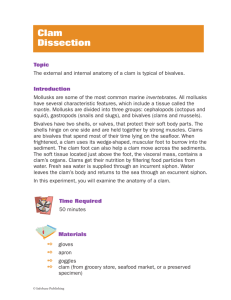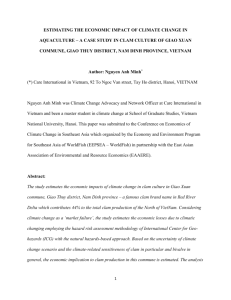ESSPURSUIT_RRTv5
advertisement
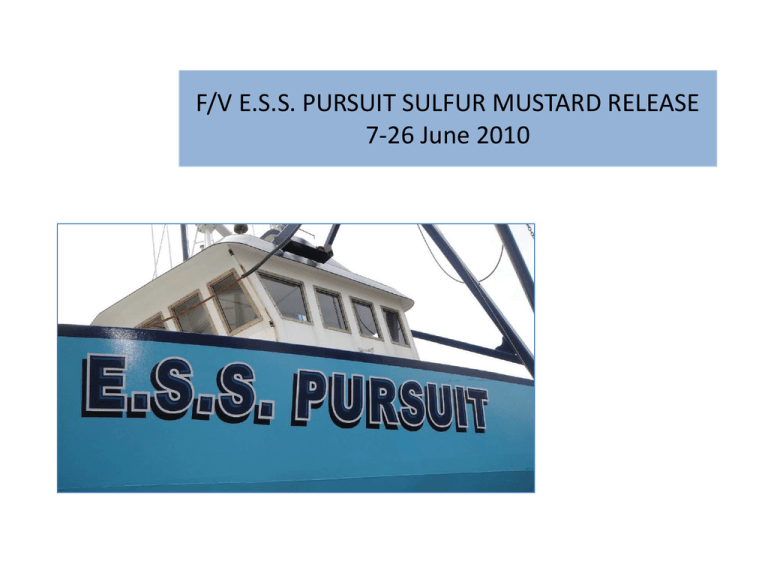
F/V E.S.S. PURSUIT SULFUR MUSTARD RELEASE 7-26 June 2010 Friday, June 4, 2010 Sunday, June 6, 2010 Unexploded Ordinance (UXO) ESS PURSUIT Type: Commercial Fishing Vessel Typical Catch: Surf Clams/Mahogany Clams Boat Length: 145.5 ft Boat Gross Tons: 183.0 Boat Net Tons: 124.0 Vessel Build Year: 2002 Ship Builder: Duckworth Steel Boats Ypres 1 4 1 Sulfur Mustard – Health Effects •Skin: redness and itching of the skin may occur 2 to 48 hours after exposure and change eventually to yellow blistering of the skin. •Eyes: irritation, pain, swelling, and tearing may occur within 3 to12 hours of a mild to moderate exposure. A severe exposure may cause symptoms within 1 to 2 hours and may include the symptoms of a mild or moderate exposure plus light sensitivity, severe pain, or blindness (lasting up to 10 days). •Respiratory tract: runny nose, sneezing, hoarseness, bloody nose, sinus pain, shortness of breath, and cough within 12 to 24 hours of a mild exposure and within 2 to 4 hours of a severe exposure. •Digestive tract: abdominal pain, diarrhea, fever, nausea, and vomiting. Monday, June 7, 2010 • Twin dredges collect clams from ocean bottom • Dredges dump catch on sorting “table” • Clams travel via conveyors to on-deck cages • Cages/catch are stored on-deck • Cages/catch continuously sprayed with refrigerated seawater until offloaded • 180 clam cages aboard vessel • Each cage measures 3’ x 4’ x 5’ • Up to 3,000 lbs of clams per cage (+/- 10%) • A typical catch could be upwards of 540,000 lbs (unprocessed weight) 0000: Vessel arrived in New Bedford 0940: New Bedford Police notify Sector SE New England What happened in those 10 hours: • Vessel offloaded 500,000 pounds of clams • Two crewmembers hospitalized • Vessel returned to sea Commercial Marine Expo 2010 June 9-10, 2010 State Pier, New Bedford, MA Tuesday, June 8, 2010 Disposal Options Three Options At-Sea Disposal • Early unanimous State and local support • Scanning • Decon • Sampling • Dump location • Clam putrification Landfill Disposal • Scanning • Decon • Sampling • Landfill acceptance • Sandia foam option • Clam putrification TSDF Disposal • Scanning • Reefer units • Cost The First Ten Days 6/8 6/9 6/10 6/11 6/12 6/13 6/14 6/15 6/16 Mon Tue Wed Thu Fri Sat Sun Mon Tue Wed Clam Scan Disposal At Needed Sea Planning ID VACIS Disposal Plan Possibility Presentation Test Run VACIS Staging Sample and release vessel 6/7 Isolate Catch Staging VESSEL Evaluate and Mitigate Threat “Begin at the beginning and go on till you come to the end: then stop.” -Alice in Wonderland Decon Vessel Scan 180 Cages Dispose at TSDF CLAMS Staging Loading of Trucks Fishing Vessel ESS Pursuit with Barge ESS Pursuit, Clean Harbors Barge and the tug boat. This photo was taken during the Clean Harbors lead decontamination operations. EPA and START Entry on ESS Pursuit with Screening Instruments - Clam Hopper and Sorter where munition was first discovered. EPA & START Entry on ESS Pursuit with Screening Instruments in galley 1st CST aboard the Fishing Vessel ESS Pursuit taking HAPSITE air monitoring readings. All readings were Non-Detect (ND), and the vessel was released to resume normal operations. EPA's START Contractors decontaminate personal affects of crew members Clam Removal & Disposal By Thursday, June 10, 2010, a final plan for clam disposal was agreed upon by Unified Command. The plan consisted of several operations: •The catch would be removed from the cooler, scanned for munitions, and returned to the cooler; •The catch would then be unloaded from the cages and placed into lined containers which would be shipped in refrigerated trailer units to a hazardous waste incinerator •The empty clam cages would be decontaminated and stacked, awaiting final screening/sampling •The tractor trailers and cooler room would also be decontaminated (and sampled) following the removal and disposal operations •Clams needed to be kept near freezing during all operations (scanning, removal, and disposal). Mustard Gas will off gas at 58°F. •Assessment and screening of the work zones with AreaRaes and other instruments would be undertaken during all operational phases. Clam Scanning Operation Preparing clam cages for the US Customs and Border Protection (CBP) xray using their HCV (Cargo Vision) to determine if there were any other ordinances or sulfur mustard canisters US CBP's HCV unit in use, scanning clam cages for ordinances. Clam Dumping Operation As requested by Incident Command, MassDEP dispatched their Field Assessment and Support Team (FAST) to provide equipment and personnel for 24-hour assessment & monitoring during the clam dumping operation. AreaRae meters were deployed around the perimeter of SeaWatch International, and monitored for Hydrogen Sulfide and Ammonia. Unit used to tip clam cages over to load the flexi-bins (cubitainers). Unit is lag bolted into the ground, and uses hydraulic pistons to tip the cage. Clam disposal operation. Tipping clams into flexi-bins for off-site incineration. Clam removal operation - clam cage being tipped so that USCG's contractors can get them into the flexi-bins. Cage Decon Operation 180 decontaminated clam cages, staged and randomized for post-decontamination sampling. EPA's START contractors perform wipe sampling on the 180 decontaminated clam cages. (Sampling the bottom of the cages, as agreed upon by the Unified Command technical experts) EPA's START Contractor - taking wipe samples on clam cages (post-decontamination) 180 clam cages decontaminated and wrapped for air sampling. 1st CST begins to take air samples with their HAPSITE. EPA's START contractors going through personnel decontamination (operated by USCG's BOA Contractor) after taking wipe samples of the refrigerated warehouse. Trailer Decon Operation A total of 486,897 pounds of clams were taken from the site to Clean Harbors incineration facilities in El Dorado, Arkansas and Deer Park, Texas. After the loads were processed, the trailers were brought back to Massachusetts and Rhode Island, where they were decontaminated and sampled by USEPA and State CSTs. Final Sampling Results Wipe Samples/Screening confirmed that no detectable results were found for the: •ESS Pursuit - completed 6/16/2010 •SeaWatch International cooler - 6/22/2010 •Clam cages - 6/26/2010 •Trailers (16 of 17)- as of 8/11/2010 The vessel, cooler, and cages were all released to their respective owners for re-use. Goal: Minimize Consequences • Human Health and Safety: 1 minor injury • Environmental damage: none • Economic impact: minimized (Sea Watch, New Bedford) • Public perception: Successful • Stakeholder perception: ? Issues for the RRT • DoD as FOSC • EPA as FOSC for Clams • Emphasis on the importance of involving locals • Sampling protocol • Need to address this membership at a more tactical level Unified Command & Involved Parties QUESTIONS ?

